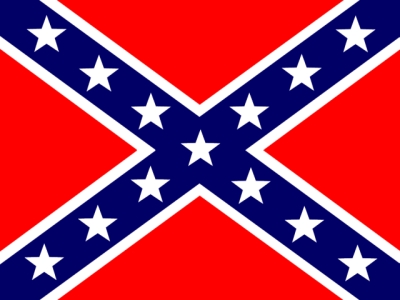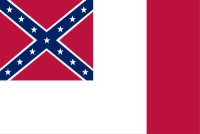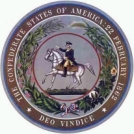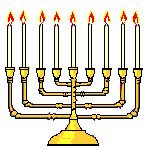Demagogue
https://en.wikipedia.org/wiki/Demagogue
A demagogue /ˈdɛməɡɒɡ/ (from French "demagogue", derived in turn from the Greek "demos" = people/folk and the verb "ago" = carry/manipulate thus "people's manipulator") or rabble-rouser is a political leader in a democracy who appeals to the emotions, fears, prejudices, and ignorance of the lower classes in order to gain power and promote political motives. Demagogues usually oppose deliberation and advocate immediate, violent action to address a national crisis; they accuse moderate and thoughtful opponents of weakness. Demagogues have appeared in democracies since ancient Athens. They exploit a fundamental weakness in democracy: because ultimate power is held by the people, nothing stops the people from giving that power to someone who appeals to the lowest common denominator of a large segment of the population.
History and definition of the word
The word demagogue, meaning a leader of the common people,[1] first arose in ancient Greece, originally with no negative connotation,[2] but eventually came to mean a troublesome kind of leader who occasionally arose in Athenian democracy. Even though democracy gave power to the common people, elections still tended to favor the aristocratic class, which favored deliberation and decorum. Demagogues were a new kind of leader who emerged from the lower classes. Demagogues relentlessly advocated action, usually violent[3]—immediately and without deliberation. Demagogues appealed directly to the emotions of the poor and uninformed, pursuing power, telling lies to stir up hysteria, exploiting crises to intensify popular support for their calls to immediate action and increased authority, and accusing moderate opponents of weakness or disloyalty to the nation. While all politicians in a democracy must make occasional small sacrifices of truth, subtlety, or long-term concerns to maintain popular support, demagogues do these things relentlessly and without self-restraint.[4]
Demagogues have been found in democracies from Athens to the present day.[3] Democracies are instituted to ensure freedom for all and popular control over government authority; through their popular appeal, demagogues exploit the freedom secured under democracy to gain a level of power for themselves that overrides the rule of law, thereby undermining democracy.[5] The Greek historian Polybius thought that democracies are inevitably undone by demagogues. He said that every democracy eventually decays into "a government of violence and the strong hand," leading to "tumultuous assemblies, massacres, banishments."[5]
Throughout its history, the word demagogue has been used to disparage any leader thought to be manipulative, pernicious, or bigoted.[3]
~~~
The TRUE Meaning of the Confederate Flag's Design
http://www.trainweb.org/seaboard/FLAG/confederateflag.htm

What do you think of when you see the flag above? What message do you think it sends?
Racism? Slavery? Hatred? White supremacy?
Something worse?
Now, what do you see when you look at the flag? What is actually on the flag?
The color Red? White? Blue? Thirteen stars?
Is that all? See anything else?
Look closer and take some time to actually think about what you are seeing. Examine every detail of the flag and it's design, because the layout of the contents of this flag actually portrays the true message the flag was designed to send.
And for the record... neither the design nor the content have anything to do with racism, slavery, hatred or white supremacy... or anything worse!
All the COLOR could be removed from this flag, leaving just the outline of the details, and the true message the design is sending could still be determined by anyone with a basic knowledge of history.
First of all, this flag is NOT the "Confederate Flag." It is the "Battle Flag of Northern Virginia." This design, however, is the one most synonymous with the term, and the one used in various forms on many of the other flags that were flown by the Confederate States. It is also the one most hated by those who are completely and totally ignorant of what it stands for.
So take another look at the flag and answer this very simple question : Do you see a big letter "X" anywhere on the flag? What if I were to lay that X down on its side like this? :  Do you see it now? The X is formed by the big, blue bands which are outlined with white trim.
Do you see it now? The X is formed by the big, blue bands which are outlined with white trim.
Now take another look at the flag. On this big "X" there are thirteen white stars. Do you know what these thirteen stars represent? They represent the thirteen original, united colonies from which the United States began (http://en.wikipedia.org/wiki/Thirteen_Colonies). Each one of these colonies had its own system of self government... until the start of 'northern aggression' when the northern states began trying to usurp authority over the southern states (http://www.globalsecurity.org/military/ops/civil_war.htm). This was the main cause of the Civil War.
Point of note : The thirteen stars on this flag appear to lie on the blue X... but in reality, the X lies on the stars, allowing them to shine through.
Now, I'd like to ask you a simple question : Do you remember from your grade-school years how the teachers would sometimes ask you to circle the right answers or picture on a work page, or to put an X on a picture or word or other item that didn't belong in a group? That is the same concept this flag is designed around; the stars are laid out in the pattern of an X, and the blue bands are put on the thirteen stars to show that the southern states no longer wanted to be a part of the union with the northern states. In simpler terms, the message of flag's design is simply this... CROSS US OUT of your Union! The southern states withdrew from the union in a movement called "secession," which led to the Civil War (http://en.wikipedia.org/wiki/Secession).
That is the only message this flag is sending!
That is all there is to it!
It is just that simple!
If this flag actually represented slavery, hatred, white supremacy, or something worse, as so many biased and uneducated people so foolishly believe, then its design would reflect that by incorporating images of those whom it stood against, and there would be a big X on their images.
But that is NOT what is on this flag!
And that is NOT the message this flag sends!
This flag is NOT racist! NEVER has been! NEVER will be!
And as I stated earlier, all that people need to have to be able to see and understand this obvious truth is a basic knowledge of history... and an ounce of common sense!
For the record... THIS is the true Confederate flag :

... and this is the seal of the Confederate States :

... NEITHER ONE OF WHICH show anything suggestive of racism, slavery, hatred or white supremacy on them!
~~~
Charleston Voice: Slavery in the US Northern States
http://chasvoice.blogspot.com/2012/10/slavery-in-northern-us-states.html
Saturday, March 23, 2013
Slavery in the US Northern States
Posted by Charleston Voice
As a northern Yankee, could your ancestors have been slavers? Best to be certain you're not just another stone thrower living in a glass house.
INTRODUCTION
African slavery is so much the outstanding feature of the South, in the unthinking view of it, that people often forget there had been slaves in all the old colonies.
Slaves were auctioned openly in the Market House of Philadelphia; in the shadow of Congregational churches in Rhode Island; in Boston taverns and warehouses; and weekly, sometimes daily, in Merchant's Coffee House of New York. Such Northern heroes of the American Revolution as John Hancock and Benjamin Franklin bought, sold, and owned black people. William Henry Seward, Lincoln's anti-slavery Secretary of State during the Civil War, born in 1801, grew up in Orange County, New York, in a slave-owning family and amid neighbors who owned slaves if they could afford them. The family of Abraham Lincoln himself, when it lived in Pennsylvania in colonial times, owned slaves.[1]
When the minutemen marched off to face the redcoats at Lexington in 1775, the wives, boys and old men they left behind in Framingham took up axes, clubs, and pitchforks and barred themselves in their homes because of a widespread, and widely credited, rumor that the local slaves planned to rise up and massacre the white inhabitants while the militia was away.[2]
African bondage in the colonies north of the Mason-Dixon Line has left a legacy in the economics of modern America and in the racial attitudes of the U.S. working class. Yet comparatively little is written about the 200-year history of Northern slavery. Robert Steinfeld's deservedly praised "The Invention of Free Labor" (1991) states, "By 1804 slavery had been abolished throughout New England," ignoring the 1800 census, which shows 1,488 slaves in New England. Recent archaeological discoveries of slave quarters or cemeteries in Philadelphia and New York City sometimes are written up in newspaper headlines as though they were exhibits of evidence in a case not yet settled (cf. “African Burial Ground Proves Northern Slavery,” The City Sun, Feb. 24, 1993).
I had written one book on Pennsylvania history and was starting a second before I learned that William Penn had been a slaveowner. The historian Joanne Pope Melish, who has written a perceptive book on race relations in ante-bellum New England, recalls how it was possible to read American history textbooks at the high school level and never know that there was such a thing as a slave north of the Mason-Dixon Line:
"In Connecticut in the 1950s, when I was growing up, the only slavery discussed in my history textbook was southern; New Englanders had marched south to end slavery. It was in Rhode Island, where I lived after 1964, that I first stumbled across an obscure reference to local slavery, but almost no one I asked knew anything about it. Members of the historical society did, but they assured me that slavery in Rhode Island had been brief and benign, involving only the best families, who behaved with genteel kindness. They pointed me in the direction of several antiquarian histories, which said about the same thing. Some of the people of color I met knew more."[3]
Slavery in the North never approached the numbers of the South. It was, numerically, a drop in the bucket compared to the South. But the South, comparatively, was itself a drop in the bucket of New World slavery. Roughly a million slaves were brought from Africa to the New World by the Spanish and Portuguese before the first handful reached Virginia. Some 500,000 slaves were brought to the United States (or the colonies it was built from) in the history of the slave trade, which is a mere fraction of the estimated 10 million Africans forced to the Americas during that period.
Every New World colony was, in some sense, a slave colony. French Canada, Massachusetts, Rhode Island, Pennsylvania, Virginia, Cuba, Brazil -- all of them made their start in an economic system built upon slavery based on race. In all of them, slavery enjoyed the service of the law and the sanction of religion. In all of them the master class had its moments of doubt, and the slaves plotted to escape or rebel.
Over time, slavery flourished in the Upper South and failed to do so in the North. But there were pockets of the North on the eve of the Revolution where slaves played key roles in the economic and social order: New York City and northern New Jersey, rural Pennsylvania, and the shipping towns of Connecticut and Rhode Island. Black populations in some places were much higher than they would be during the 19th century. More than 3,000 blacks lived in Rhode Island in 1748, amounting to 9.1 percent of the population; 4,600 blacks were in New Jersey in 1745, 7.5 percent of the population; and nearly 20,000 blacks lived in New York in 1771, 12.2 percent of the population.[4]
The North failed to develop large-scale agrarian slavery, such as later arose in the Deep South, but that had little to do with morality and much to do with climate and economy.
The elements which characterized Southern slavery in the 19th century, and which New England abolitionists claimed to view with abhorrence, all were present from an early date in the North. Practices such as the breeding of slaves like animals for market, or the crime of slave mothers killing their infants, testify that slavery's brutalizing force was at work in New England.
Philadelphia brickmaker John Coats was just one of the Northern masters who kept his slave workers in iron collars with hackles. Newspaper advertisements in the North offer abundant evidence of slave families broken up by sales or inheritance. One Boston ad of 1732, for example, lists a 19-year-old woman and her 6-month-old infant, to be sold either "together or apart."[5] Advertisements for runaways in New York and Philadelphia newspapers sometimes mention suspicions that they had gone off to try to find wives who had been sold to distant purchasers.
Generally, however, as the numbers of slaves were fewer in the North than in the South, the controls and tactics were less severe. The Puritan influence in Massachusetts lent a particular character to slavery there and sometimes eased its severity. On the other hand, the paternal interest that 19th century Southern owners attempted to cultivate for their slaves was absent in the North, for the most part, and the colonies there had to resort to laws to prevent masters from simply turning their slaves out in the streets when the slaves grew old or infirm. And across the North an evident pattern emerges: the more slaves lived in a place, the wider the controls, and the more brutal the punishments for transgressions.
Slavery was still very much alive, and in some places even expanding, in the northern colonies of British North America in the generation before the American Revolution. The spirit of liberty in 1776 and the rhetoric of rebellion against tyranny made many Americans conscious of the hypocrisy of claiming natural human rights for themselves, while at the same time denying them to Africans. Nonetheless, most of the newly free states managed to postpone dealing with the issue of slavery, citing the emergency of the war with Britain.
That war, however, proved to be the real liberator of the northern slaves. Wherever it marched, the British army gave freedom to any slave who escaped within its lines. This was sound military policy: it disrupted the economic system that was sustaining the Revolution. Since the North saw much longer, and more extensive, incursions by British troops, its slave population drained away at a higher rate than the South's. At the same time, the governments in northern American states began to offer financial incentives to slaveowners who freed their black men, if the emancipated slaves then served in the state regiments fighting the British.
When the Northern states gave up the last remnants of legal slavery, in the generation after the Revolution, their motives were a mix of piety, morality, and ethics; fear of a growing black population; practical economics; and the fact that the Revolutionary War had broken the Northern slaveowners' power and drained off much of the slave population. An exception was New Jersey, where the slave population actually increased during the war. Slavery lingered there until the Civil War, with the state reporting 236 slaves in 1850 and 18 as late as 1860.
The business of emancipation in the North amounted to the simple matters of, 1. determining how to compensate slaveowners for the few slaves they had left, and, 2. making sure newly freed slaves would be marginalized economically and politically in their home communities, and that nothing in the state's constitution would encourage fugitive slaves from elsewhere to settle there.
But in the generally conservative, local process of emancipating a small number of Northern slaves, the Northern leadership turned its back on slavery as a national problem.
~~~
Why were African merchants willing to sell slaves to Europeans? Were they “selling their own people”?
http://africa.unc.edu/outreach/ASA/slavery_and_trade.pdf
"Like most of the rest of the world, slavery was well-established in West Africa. It varied in texture, including caste or lineage slavery, military slavery, and especially labor slavery, as land was allocated according to need and ability to work the land.
Some historians suggest that slavery in Africa was milder than the slavery that developed in North and South America, others argue that it was different but could be highly oppressive.
Long-distance trading was an occupational specialty that West and West-Central Africans held in high regard.
-- The Atlantic hinterland of black Africa contained a grid of trade routes dotted with commercial settlements. These formed a network that permitted traders to travel widely among communities where they could employ local associates as their aids and agents.
-- Trans-Saharan trading included a number of commodities, including slaves.
-- Europeans worked hard to furnish desirable trade commodities to African merchants
-- Revenues such as taxes and tolls kept African elites amenable to the enterprise.
The majority of people sold to Europeans as slaves were prisoners of war, thus outsiders, and this was an acceptable fate for prisoners throughout most of the world.
Africans did not identify on racial or national lines, but on very local levels and along lineage lines. They were not selling “their own,” any more than Europeans were purchasing “their own.” No “African” or “Black” identity in Africa during the slave trade.
There was African resistance to the slave trade in various locations from time to time, but not frequent. "
~~~
Slavery and the Civil War: Not What You Think | Jeff Schweitzer
http://www.huffingtonpost.com/jeff-schweitzer/slavery-and-the-civil-war_b_849066.html
"With a volley of artillery fired at Fort Sumter in Charleston Harbor on April 12, 1861, the South started a war that nearly destroyed the United States in pursuit of a terrible cause. In that conflict more than 630,000 soldiers were killed or wounded in four years of hellish war. To place this in perspective consider that the entire population of the United States at war's end was 35 million, putting war casualties at nearly two percent of the total populace. Equivalent rates of casualties today would result in five million dead or wounded, dwarfing our losses in World War II, or any other war.
Why did two percent of our population suffer death or maiming? Over the issue of state sovereignty and the interpretation of the Tenth Amendment (ratified in 1791). The text is simple enough: "The powers not delegated to the United States by the Constitution, nor prohibited by it to the States, are reserved to the States respectively, or to the people." But we also have the Supremacy Clause of Article VI of the Constitution, which say, "This Constitution, and the Laws of the United States which shall be made in Pursuance thereof; and all Treaties made, or which shall be made, under the Authority of the United States, shall be the supreme Law of the Land; and the Judges in every State shall be bound thereby, any Thing in the Constitution or Laws of any State to the Contrary notwithstanding."
This week, marking 150 years from that momentous event at Fort Sumter, is an appropriate time to reflect again on what happened and why in this epic constitutional dispute.
That "terrible cause" of the South is usually thought of as the defense of slavery. This is what we are all taught in school; and the idea is strongly entrenched today. In the April 10, 2011, Miami Herald columnist Leonard Pitts Jr. defined the Civil War as a conflict over property rights, the property being of course four million slaves living in the South at the time. He concludes that the "Civil War was about slavery, nothing more."
I disagree. Yes, slavery was of course the central point of contention, but as an example of state sovereignty versus federal authority. The war was fought over state's rights and the limits of federal power in a union of states. The perceived threat to state autonomy became an existential one through the specific dispute over slavery. The issue was not slavery per se, but who decided whether slavery was acceptable, local institutions or a distant central government power. That distinction is not one of semantics: this question of local or federal control to permit or prohibit slavery as the country expanded west became increasingly acute in new states, eventually leading to that fateful artillery volley at Fort Sumter.
Specifically, eleven southern states seceded from the Union in protest against federal legislation that limited the expansion of slavery claiming that such legislation violated the tenth amendment, which they argued trumped the Supremacy Clause. The war was indeed about protecting the institution of slavery, but only as a specific case of a state's right to declare a federal law null and void. Southern states sought to secede because they believed that the federal government had no authority to tell them how to run their affairs. The most obvious and precipitating example was the North's views on slavery. So yes, the South clearly fought to defend slavery as a means of protecting their sordid economic system and way of life, but they did so with slavery serving as the most glaring example of federal usurpation of state powers of self-determination. The war would be fought to prevent those states from seceding, not to destroy the institution of slavery. The war would be fought over different interpretations of our founding document.
The inherent tension between Article VI and the Tenth Amendment of the Constitution has kept lawyers busy and wealthy from the day the words were penned, and the argument goes on today. But the South went a significant step further than arguing a case. In seceding from the Union those states declared the U.S. Constitution dead. The president of the United States, sworn to uphold the Constitution, had no choice but to take whatever measures were necessary to fulfill his commitment. Cleary if any state could withdraw from the Union whenever that state disagreed with others, the Union over which Lincoln presided would not last long. So war came.
But freedom for slaves did not. President Lincoln did not issue the Emancipation Proclamation until January 1, 1863, more than one and a half years after the war started. His goal was initially to preserve the Union, and he only issued that proclamation when he felt doing so would promote that objective. One could argue that if the primary cause of the war was slavery then Lincoln's first act would have been to free them. Historians have written many volumes on Lincoln's timing and motivation, but one thing is clear: slavery was not his first priority. "













 Do you see it now? The X is formed by the big, blue bands which are outlined with white trim.
Do you see it now? The X is formed by the big, blue bands which are outlined with white trim.




























